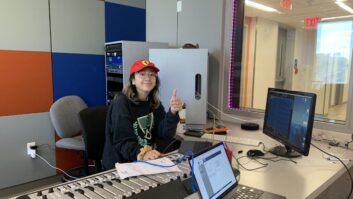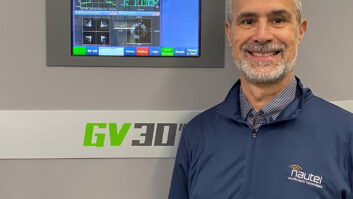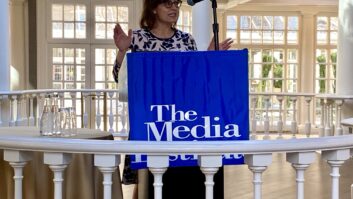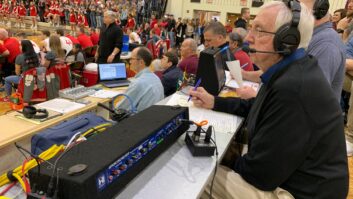I think every engineer at one time or another has considered seriously the possibility of perpetual motion.
It seems so logical: Connect a motor to a generator that provides the power that drives the motor that drives the generator that provides the power that drives the motor that drives the generator … Well, you get the idea.
But the simple truth is that the application of outside energy is required in order to accomplish any task. Nothing is truly self-sufficient. After all, perpetual motion is only an unrealizable concept.
Demand
And so it is with engineering education. At one time, we in the SBE thought that by setting standards and administering tests, we could not only benchmark the achievements of our members, but also provide the stimulus that would create additional educational opportunities for the broadcast industry.
Unfortunately, that idea turned out to be just another perpetual-motion dream. While it is critical that we recognize the educational achievements of broadcast engineers by offering certifications, we don’t see how that effort directly promotes additional engineering education. We seem to be missing a piece of the puzzle.
Our educational system is based completely on the free-enterprise model – that is, schools provide educational training to those who wish to enter certain fields of endeavor based on the demand for that training and the expected job satisfaction and financial rewards that come from the desired profession.
If you think about the profession of broadcast engineering in those terms, it is easy to see why there are so few educational opportunities offered. Yet our industry continues to demand trained people.
Where is that basic and continuing education going to come from?
About 18 months ago, the SBE Certification Committee and Certification Director (and new SBE Fellow!) Linda Godby came up with a plan to begin to offer educational programming as part of the certification effort. This concept marked a significant departure from our earlier view of the Certification Program as primarily a standards-setting and benchmarking effort.
Our plan was to offer a one-day training seminar for the new Certified Broadcast Networking Technologist Certification, which would be followed by administration of the examination. Thus, in one day of effort, engineers could become trained and certified in this most important area of hardware support for broadcast computer networks.
After beta-testing the tutorial at the NPR Engineering Conference in 2000, we presented the concept to the Broadcast Executive Directors Association. Our thinking was that a liaison with the state associations was perhaps the most efficient way of getting this training to the engineers who might be unable to attend the major broadcast conventions.
The results?
• Twenty tutorials presented at 15 state broadcast association meetings since February 2001;
• More than 150 hours of actual instructional time given to members across the country;
• More than 200 new members brought into the SBE;
• More than 300 new CBNT certifications this year;
• Development of a continuing partnership between SBE chapters and their state broadcast associations.
Two of the real benefits of the tutorial approach are its availability and affordability, made possible by our association with the state broadcasters.
And if there is one message that we have gotten “loud and clear” from the state broadcasters, it is that there is a definite need for more qualified engineering help and that the tutorials we are offering are seen as responsive to that need.
New offerings
Of course, being responsive means being sensitive to the needs of everyone in the industry: engineers, stations, management, ownership and regulatory agencies.
So, based on the success of the CBNT tutorials, another tutorial was developed, designed to train Designated Chief Operators in their required duties in preparation for station participation in the FCC Alternative Inspection Program administered by the state associations.
This effort has not only clarified the sometimes-confusing FCC rules for many, but we feel it has also raised the level of compliance with FCC rules in states where the tutorial has been presented.
And we’re not done yet! As a result of feedback from our tutorial participants, we are developing a third program, this one designed as a basic review of RF technology.
This should serve as a primer for new engineers entering the profession as well as studio and IT engineers who wish to expand their knowledge base. We intend that digital TV and radio transmission theory will be an integral part of this presentation.
But who says engineering education is just for engineers? In today’s consolidated communications marketplace, it is essential that station ownership and management understand and appreciate the unique work that broadcast engineers accomplish.
A tutorial called “Engineering for Managers” is being developed to address this issue, and the first presentation will be made to the Ohio Association of Broadcasters meeting this fall.
Good investment
We may not turn managers into engineers, but we certainly can bring to them a greater appreciation of the real value that effective engineering brings to their stations, as well as promote the idea that an investment in continuing education/training for broadcast engineers is a wise business decision.
As engineers, we all know that perpetual motion is a practical impossibility. But by continuing these targeted and effective educational efforts, the Society of Broadcast Engineers is providing the external energy that just may set the wheels of broadcast education back into motion.
And that will go a long way toward not only benchmarking the achievements of our membership but also advancing their value to their employers and clients. And that will lead to better salaries for engineers, which will lead to more educational opportunities, which will lead to more qualified engineers, which will lead to better engineering, which will lead to better station profitability, which will lead to better salaries, which will lead to …
You know, maybe it’s time we rethink that perpetual-motion idea.
Radio World welcomes other points of view.












